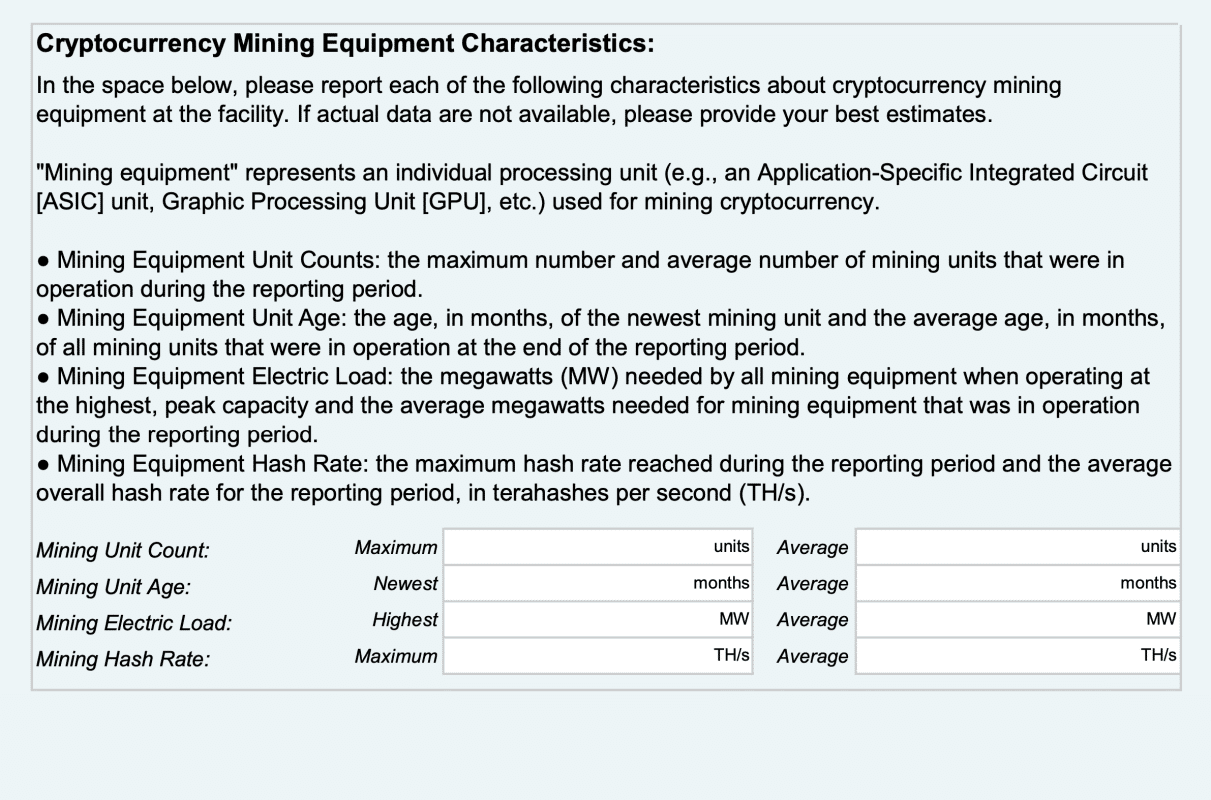What the US Wants to Know Exactly in the Bitcoin Mining Survey

The U.S. Energy Information Administration (EIA) announced earlier this week that it will send a survey in the coming week to selected crypto mining companies in the U.S. to gauge their electricity use.
The EIA, part of the U.S. Department of Energy responsible for collecting, analyzing, and distributing energy-related data, plans to collect data from about 82 cryptocurrency mining companies that are “required to respond with details related to their energy use.”
The EIA said it has conducted a “rigorous” evaluation of U.S. crypto mining activities using public data and estimated it to “represent as much as 2.2% of U.S. electricity consumption.”
Although the EIA used the term “cryptocurrency mining,” it likely refers to bitcoin mining, given Ethereum has already switched to proof-of-stake, and activities on other types of proof-of-work blockchains appear almost negligible compared to bitcoin mining.
It appears that such an estimation motivated the EIA to obtain more first-hand data on bitcoin mining’s energy consumption in the U.S.
However, according to the survey questions provided by the EIA as part of the announcement, the agency aims to obtain more granular data than just electricity use. Below is a list of the information that the EIA wants a surveyed company to provide regarding its mining activities:
- Company name, address, and the total number of mining facilities
- Detailed breakdown for each mining facility:
- Facility Profile
- Name
- Location (Street, City, State, Zip Code, Geographic Coordinates)
- Energy Consumption
- Total Electricity Consumption
- Percentage of Total Electricity Consumption Used by Cryptocurrency Mining
- Name of Electric Service Provider
- Name of Top Five Energy Suppliers and Their Respective Electricity Supply
- Mining Fleet
- Number of Miners
- Newest and Average Age of All Miners
- Highest and Average Electric Load
- Maximum and Average Hashrate
- Facility Profile
In essence, the EIA aims to pinpoint the exact location of all the facilities of a mining company and understand how much energy each facility is drawing from which energy suppliers with what types of mining equipment.
The collection of a dataset with this level of granularity could likely paint the most comprehensive picture to date of the bitcoin mining map in the U.S.
The EIA indicated in the survey that the respondents are all “commercial cryptocurrency mining facilities in the U.S.,” adding that “failure to comply may result in criminal fines, civil penalties, and other sanctions as provided by law.”
It remains to be seen which companies will receive the survey and how they will react. But some also raised privacy concerns given the granularity of the survey.
Marty Bent, a bitcoin influencer and co-founder of the bitcoin mining firm Standard Bitcoin, wrote in a blog post calling the survey “one of the most egregious encroachments on privacy and free markets,” adding:
“It is so egregious that it is hard not to believe that this survey is anything less than a first step that leads down a path toward an all-out attack on the mining industry in the United States.”
